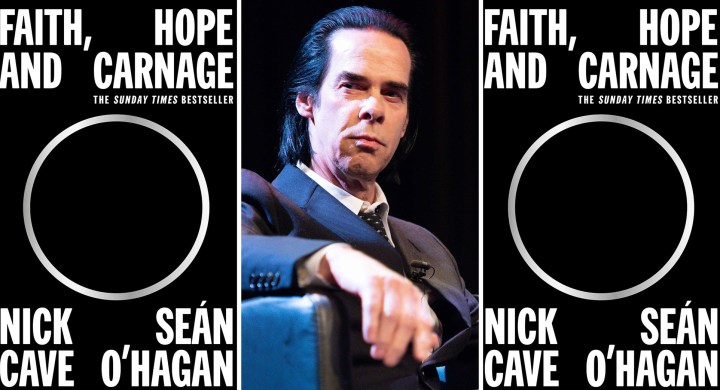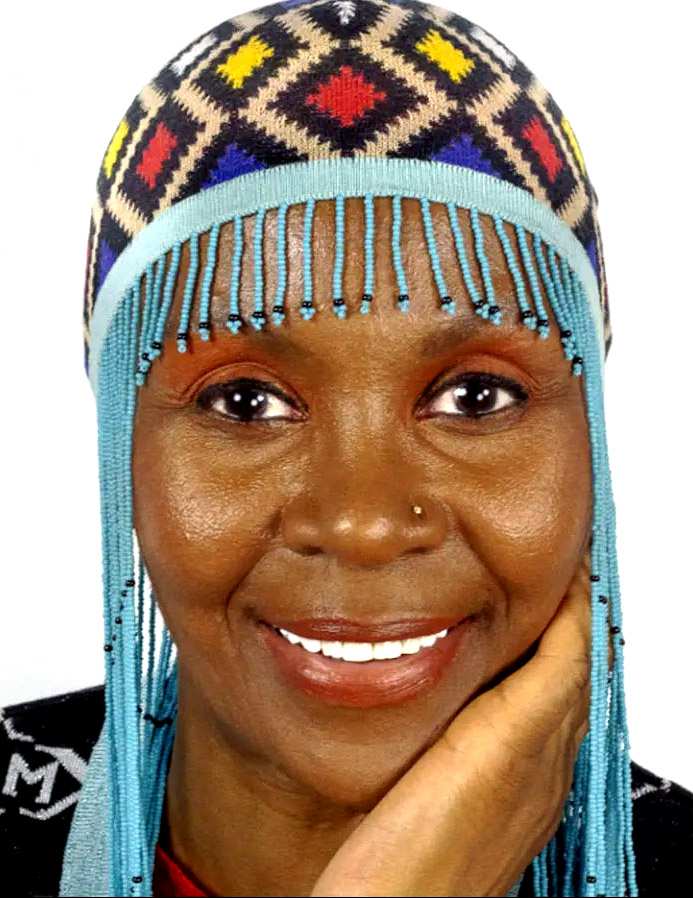BOOK REVIEW
Reflections on Nick Cave’s ‘Faith, Hope and Carnage’

‘Hope is in every little thing, as far as I can see. Hope is optimism with a broken heart’ – Nick Cave.
Midway through a series of interview-conversations that make up Nick Cave’s book Faith, Hope and Carnage, Cave tells Sean O’Hagan, the interviewer: “The world can easily do without another Nick Cave song. But the songs do have a greater function for me. They’re the way I measure my life.”
I have never been a follower of Cave’s music and writing. Despite the 40-year span of his work, and despite his post-punk insubordination to the mainstream of pop and rock, he’s always been a figure on the periphery of my musical awareness. His sometimes cacophonous songs felt like Brecht meets Jim Morrison or Patti Smith, dissonant and difficult, that is if you are uninitiated. So, as much as music has shaped my thought and life – an electric mash from Bob Marley to Mozart, the Sex Pistols to the Sound of Music – Cave has never been part of that mash.
What this means is that I didn’t buy Faith, Hope and Carnage because I’m a fan. Which makes it all the more surprising how profound, powerful and unexpected I have found the book to be.
It’s an odd book. An abstract, stream-of-consciousness conversation that Cave holds with art writer Sean O’Hagan.
It’s a book of meandering intangibles, thought farts and brain chatter. The tangible, to the extent that there is one, revolves around the death of Cave’s 15-year-old son Arthur in 2015, in an accident on the cliffs in Brighton, England, and the ways in which Cave and his wife Susie travelled through the fog and physical pain of grief and eventually came to a new understanding of the world, even admitting joy and happiness. In fact, defying grief to embrace joy.
According to Cave: “Arthur showed us the necessary and urgent need to love life and one another, despite the casual cruelty of the world. Love, that most crucial, counterintuitive act of all, is the responsibility of each of us.”
That said, it’s not a “how to handle grief” book, it’s deeper and more demanding than that. Cave describes the loss of Arthur as “a condition, not a theme”. He describes how he learnt to live with that condition; loss and grief is a feature of what he calls “the acute jeopardy of life”, recovery is “an audacity in the face of things, a kind of feckless refusal to submit to the condition of the world”.
***
The Cave/O’Hagan conversations began in the early days of the Covid-19 pandemic, with Cave locked down and prevented from touring with his then new album Ghosteen. If you can briefly recall the time the Earth stood still, it was a time when space and enough time for reflection opened up and offered “a beautiful kind of freedom”.
The two men proceed to talk tentatively. Cave’s very first line is: “Well, who wants to do an interview? Interviews, in general, suck. Really. They eat you up. I hate them.” But he admits to being “intrigued to see where it would go”.
And thus begins a kind of seeping out of thought, along conversation tributaries that eddy as they encounter ideas, issues and events in life.
Eventually, the conversations shape into 15 chapters, each an undated interview that I assume spreads over nearly two years (the hardcover of the book was first published in 2022). By the time the book ends, the world has changed again. It is now post-pandemic and Cave can reflect that “I think the pandemic offered us an opportunity to improve the world and we blew it”.
In this unique, unstable context, grief and loss are the pivots for a re-examination of love, music, religion, language, people and the “beautiful, desperate world” we live in. Among many other things.
‘Life is too damn short, in my opinion, not to be awed’
Faith, Hope and Carnage is now full of my pencilled underlinings. For me, underlining a passage in a book marks a moment of connection, resonance, finding words for something I have felt but maybe never formed into words, or just a way of recognising – and later returning to – the beauty of a string of words that capture something deep; what Gerard Manley Hopkins called “inscape”, sudden unexpected flashes of understanding as meaning reveals itself.
Here are a few examples.
Describing the process of improvisation in his songwriting, but seeing the poetry in the ordinary is a truth that eludes most of us: “You have to be patient and alert to the little miracles nestled in the ordinary.”
“Boredom is close to epiphany, to the great idea,” he says, and I think of how so much of my life is still an escape from ennui, when maybe the elusive answers you seek in activism may actually exist in letting it overwhelm you from time to time.
As I grow older I suddenly find life characterised by news of deaths of friends, rather than births and blossoming, which made me reach for my pencil for the following:
“I think the old become not just repositories of lived experience, but of the dead, too. I’ve lost my mother this year, as well as a good friend, Hal Willner, and they have joined an ever-expanding company of loved ones who have passed on. I think these absences do something to those of us who remain behind. We are like haunted houses, in a way, and our absences can transform us so that we feel a quiet but urgent love for those who remain, a tenderness to all of humanity, as well as an earned understanding that our time is finite.”
Following on all these scratchings I now try to write about Faith, Hope and Carnage, as part of my process of internalising its meanings – and I invite you into the text – because it identifies and articulates so many of my own disquiets. It seems to form part of a burgeoning canon of work (in song, literature, art) that is attempting a re-examination of meaning that is taking place, partly “post-Covid” but also as it dawns on more and more of us that the world is in a desperate man-made mess, and as we try to get to grips with our own culpabilities. We live in the end times, and meaning and purpose in life is not what we thought it to be. Cave writes wryly that “We’re often led to believe that getting older is somehow a betrayal of our idealistic younger self, but sometimes I think it might be the other way round. Maybe the younger self finds it difficult to inhabit its true potential because it has no idea what that potential is. It’s a kind of unformed thing running scared most of the time …” He talks of that self being smashed into a million pieces, and the quest to “reassemble” self. I sense that that’s what is happening to many of us as we seek not just new meanings, but new ways of living, working and behaving.
***
My one critical reflection on the book is that it seems unconscious – Cave seems unconscious that is – that in a very fundamental way it is itself an embodiment of the deepest inequalities that have broken our humanity and turned us into a non-society of atomised individuals banging into and breaking each other, rather than interacting based upon a celebration of all that is free and beautiful in the ordinary.
Cave says that “Suffering is, by its nature, the primary mechanism of change, and that it somehow presents us with the opportunity to transform into something else, something different, hopefully something better… this change is not something we necessarily seek out; rather, change is often brought to bear upon us, through a shattering or annihilation of our former selves.” But when he writes like this it is as if his experiences of grief, loss and redemption from grief are universal – if only we would prostrate ourselves before our feelings. Implicitly he suggests that his quest could be embarked on by others: it’s just the mental slavery we have to emancipate ourselves from. True, we have to re-find our shape. We have to start looking into other people’s faces. “But habit is a great deadener” as Beckett recognised more than 70 years ago as he put words to the anguish of Vladimir in Waiting for Godot.
Because part of Cave’s recovery is through his music, through moulding ceramic figurines out of clay and through writing, Cave can write that “Art does have the ability to save us, in so many different ways. It can act as a point of salvation, because it has the potential to put beauty back into the world.”
He’s right.

Louisa Zondo. (Photo: The Reading List)
But the sad thing is that all human life is not equally “imperilled” the world over (yet). Those who suffer the greatest loss – sometimes multiple times in a year, or a week or a day – usually have the least space to grieve and grow from the experience. Louisa Zondo recognises this in her book, Dearest MaRicky, A Mother’s Journey Through Grief, Trauma and Healing, where she writes of being “troubled that many are unable to access even basic support to hold them through the dark journey that the soul takes when a loved one has died by suicide.”
As we are now seeing every day in wars and the great human mass migration away from lands plagued by disaster and hunger, the mundane matters of survival, finding a place to sleep, food to eat, soon take over again.
For me the real problem now is whether we seek to comprehend the agony that is all around us. Could we?
Therefore, perhaps one important task for the modern artist is to put him/herself into the bodies and minds of these people, to use the privilege of peace to try to recreate the pain and anguish of displacement, so as to build bridges back to universal compassion. That’s what great writers from Dickens to Dostoevsky did. They recreated conscience and compassion.
In this respect, ultimately this beautiful, disruptive book, which offers a deep, personal examination of the wellsprings of emotions that are fundamental to all our being, brings me back to the problem I am trying to get away from in the first place. The fact that we live in a world that only recognises emotions and suffering in the privileged, and damns the rest.
But then I guess that’s always been the story with art. DM
"Information pertaining to Covid-19, vaccines, how to control the spread of the virus and potential treatments is ever-changing. Under the South African Disaster Management Act Regulation 11(5)(c) it is prohibited to publish information through any medium with the intention to deceive people on government measures to address COVID-19. We are therefore disabling the comment section on this article in order to protect both the commenting member and ourselves from potential liability. Should you have additional information that you think we should know, please email letters@dailymaverick.co.za"



 Become an Insider
Become an Insider